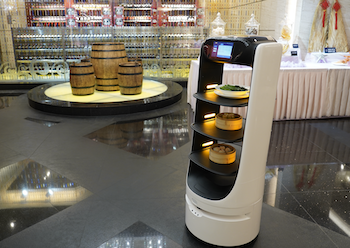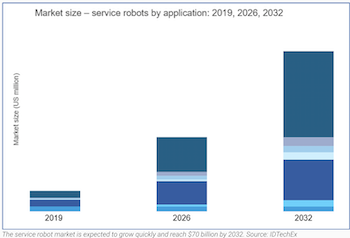Service robots are becoming increasingly popular these years especially influenced by the COVID-19. Robots have the potential to revolutionize so many aspects of the modern world, from optimizing industrial efficiency to improving our everyday lives. Unlike the traditional robots used in industrial applications, service robots are primarily designed to support people in their daily life.
As a broad definition, service robot covers a wide range of applications and types of robots, ranging from logistics and delivery robots, social robots, cleaning robots, disinfection robots, robotic chefs/kitchen robots, robotic waiters/restaurant robots, agricultural robots, and underwater robots.

Restaurant robots (commonly known as robotic waiters) and kitchen robots (commonly known as robotic chefs) have gained lots of attention during the past two years due to the impact of COVID. Restaurant and kitchen robots can help restaurant owners better manage the food preparation such as maintaining stable food quality, reducing food waste, vvtaking less space, etc. Many restaurant owners are reluctant/unable to make a big upfront investment, which presents a significant barrier to market uptake. However, given the massive potential of restaurant and kitchen robots, the IDTechEx does research and see a number of market entry opportunities in the highly standardized fast-food industry.

While the service robot market is at a much earlier stage of development than the traditional industrial robots, there is increasing effort within this space to promote the adoption of service robots.
